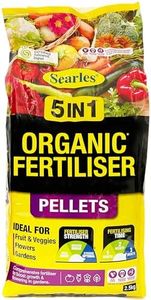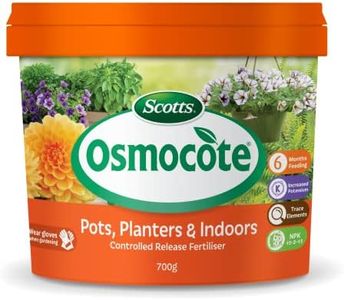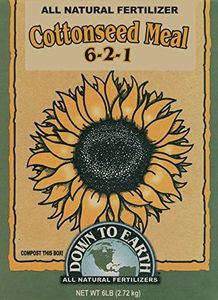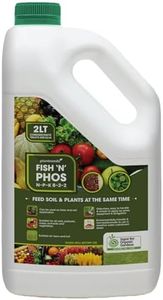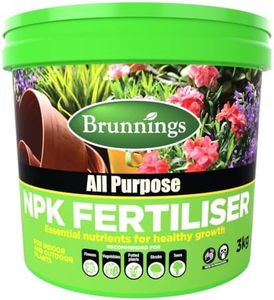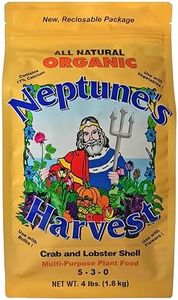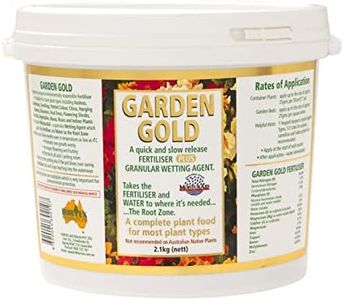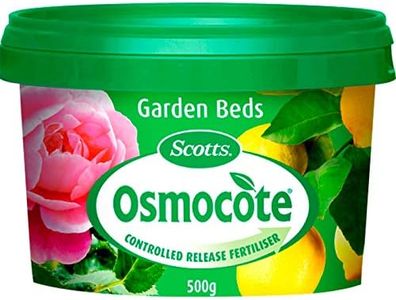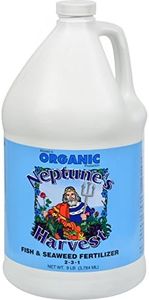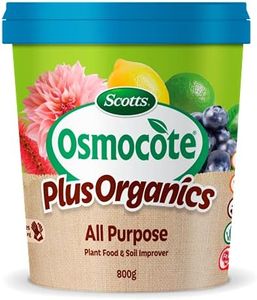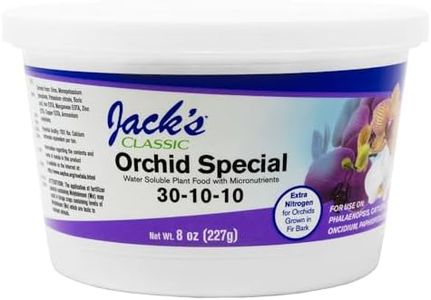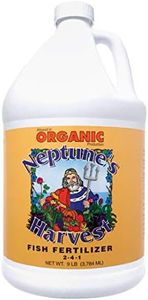We Use CookiesWe use cookies to enhance the security, performance,
functionality and for analytical and promotional activities. By continuing to browse this site you
are agreeing to our privacy policy
10 Best Perennial Fertilizer
From leading brands and best sellers available on the web.Buying Guide for the Best Perennial Fertilizer
Choosing the right fertilizer for your perennials plays a big role in their long-term health and flowering or foliage performance. Fertilizers supply the extra nutrients that your soil might not naturally provide. Because perennials live for several years, it's especially important to pick a fertilizer that meets their recurring needs without encouraging too much growth or stressing their roots. A thoughtful approach means you'll have healthy, beautiful plants season after season.NPK RatioThe NPK ratio on a fertilizer label stands for Nitrogen (N), Phosphorus (P), and Potassium (K). These are the three primary nutrients plants need. Nitrogen helps with leafy growth, phosphorus supports root and flower development, and potassium keeps your plants overall healthy and stress-resistant. Ratios can vary, such as 10-10-10 or 5-10-5. A balanced ratio (similar numbers for each nutrient) is good for general garden use, but if you want more bloom, pick something with a bit more phosphorus. For lush leaves, a higher nitrogen content helps. Check your plants’ needs and your soil condition—if your soil is already rich in a certain nutrient, you may not want a fertilizer heavy in that element.
Release Type (Slow-Release vs. Quick-Release)You’ll find both slow-release and quick-release fertilizers. Slow-release fertilizers break down slowly and provide nutrients over a longer time; these are ideal for perennials because they supply steady nourishment without shocking the plant. Quick-release fertilizers act fast, but require more frequent application and can wash away or burn roots if overused. For most perennials, slow-release is the more reliable, less labor-intensive choice. Pick it if you want healthy, steady growth throughout the season.
Organic vs. SyntheticFertilizers can be organic, made from natural materials like compost or manure, or synthetic, which are chemically manufactured. Organic fertilizers improve soil health and are better for the environment, releasing nutrients gently and improving soil structure. Synthetic options often work faster and have precise nutrient amounts but do not enhance long-term soil quality. If you want to build better soil and have a garden that thrives year after year, organic is usually the best fit, but if you need a quick boost, a synthetic option may suit you.
Micronutrient ContentIn addition to the main NPK nutrients, plants also need tiny amounts of micronutrients like magnesium, iron, and zinc. Good perennial fertilizers often include these extras, which help with tasks like forming greener leaves and stronger stems. If your soil is already balanced or your plants show no deficiencies (such as yellowing leaves), this is less important. But in poor or sandy soils, a fertilizer with added micronutrients can prevent subtle problems and keep perennials vibrant.
Application MethodFertilizers for perennials come as granules, spikes, powders, or liquids. Each type works a bit differently: granules and spikes are easy to apply and last a while, powders dissolve in water for even coverage, and liquids act fast but need to be reapplied more often. Choose the method that fits your gardening habits and the size of your perennial beds—granules or spikes suit busy gardeners, while liquids or powders may be preferred if you like to fine-tune and closely monitor your plants.

